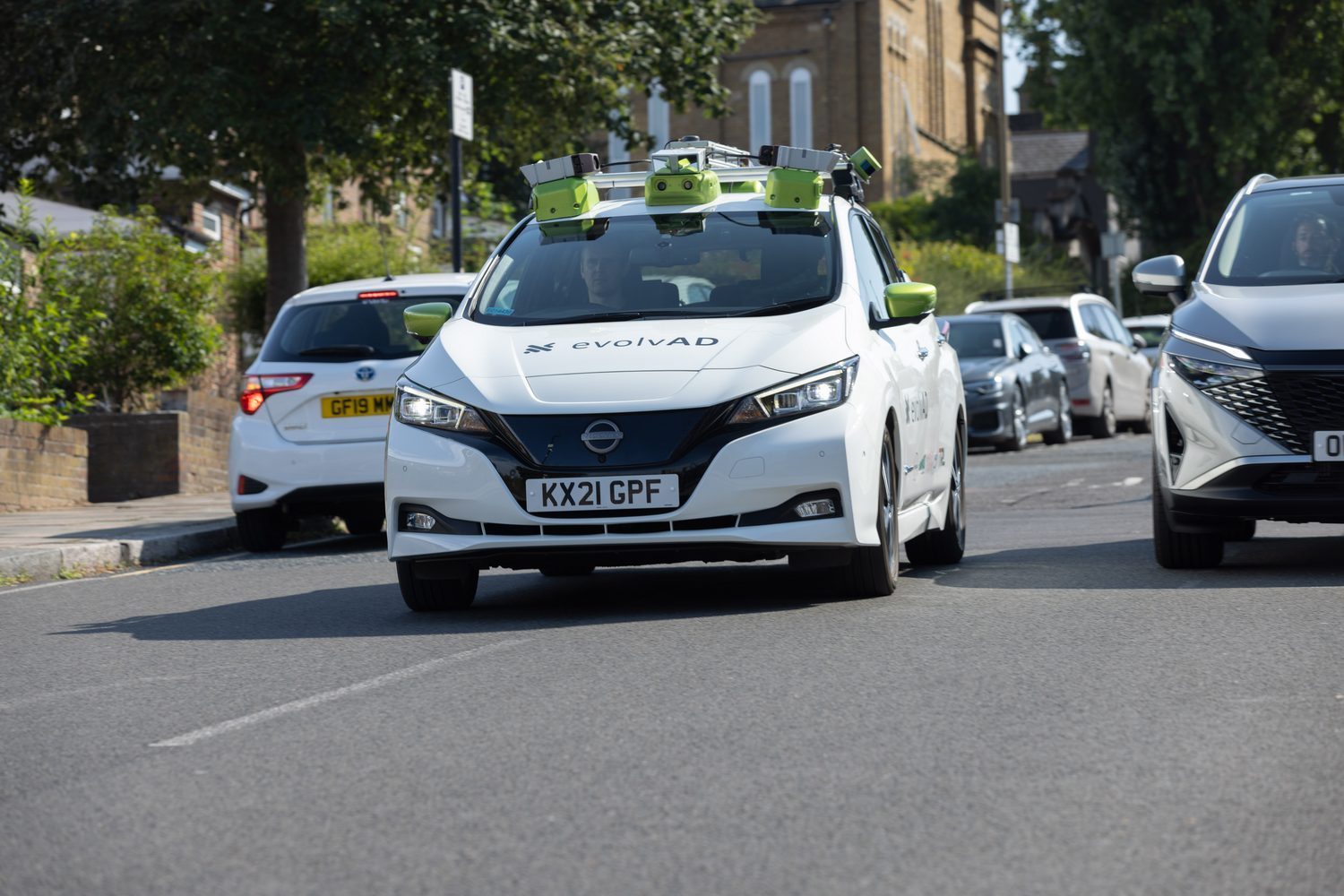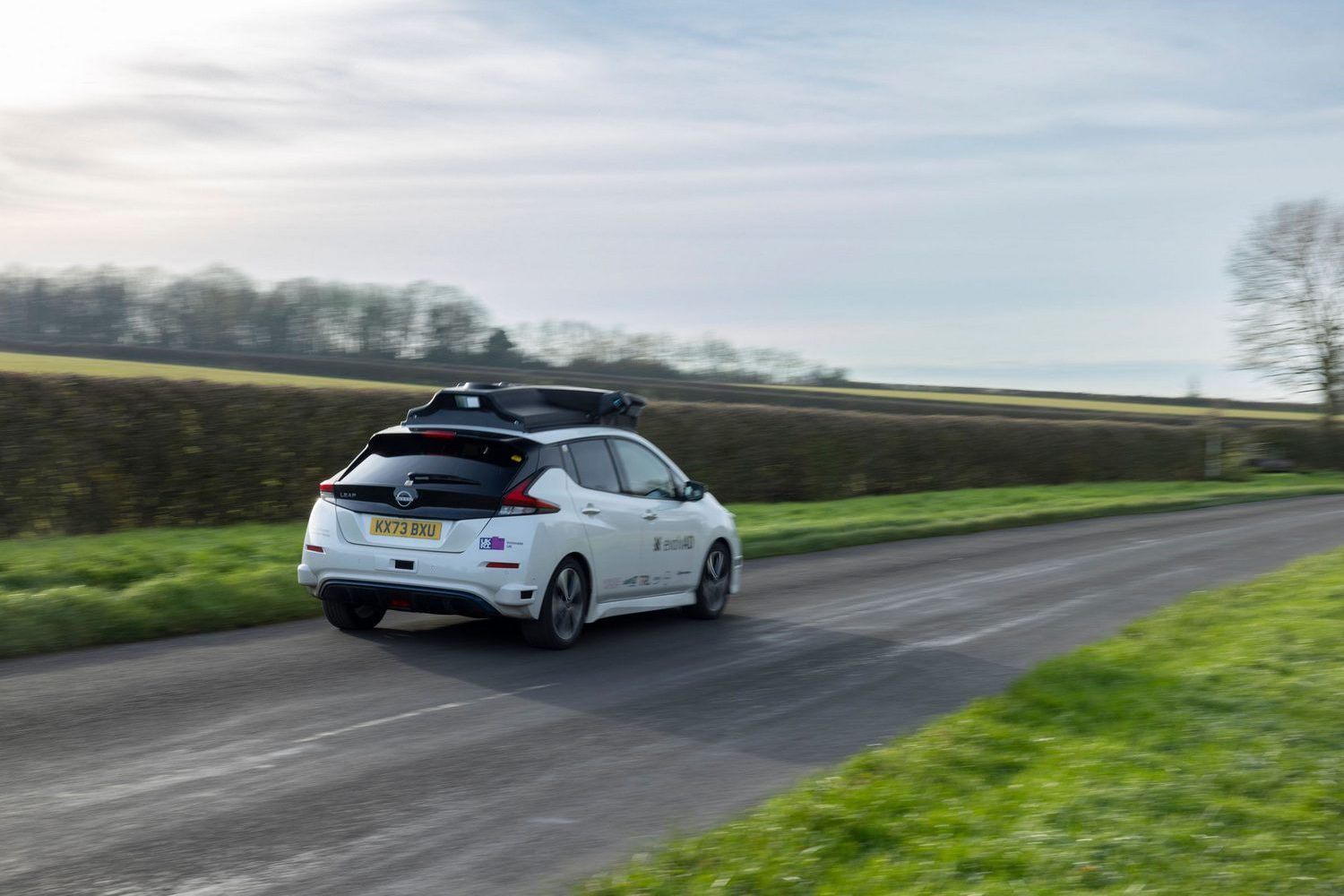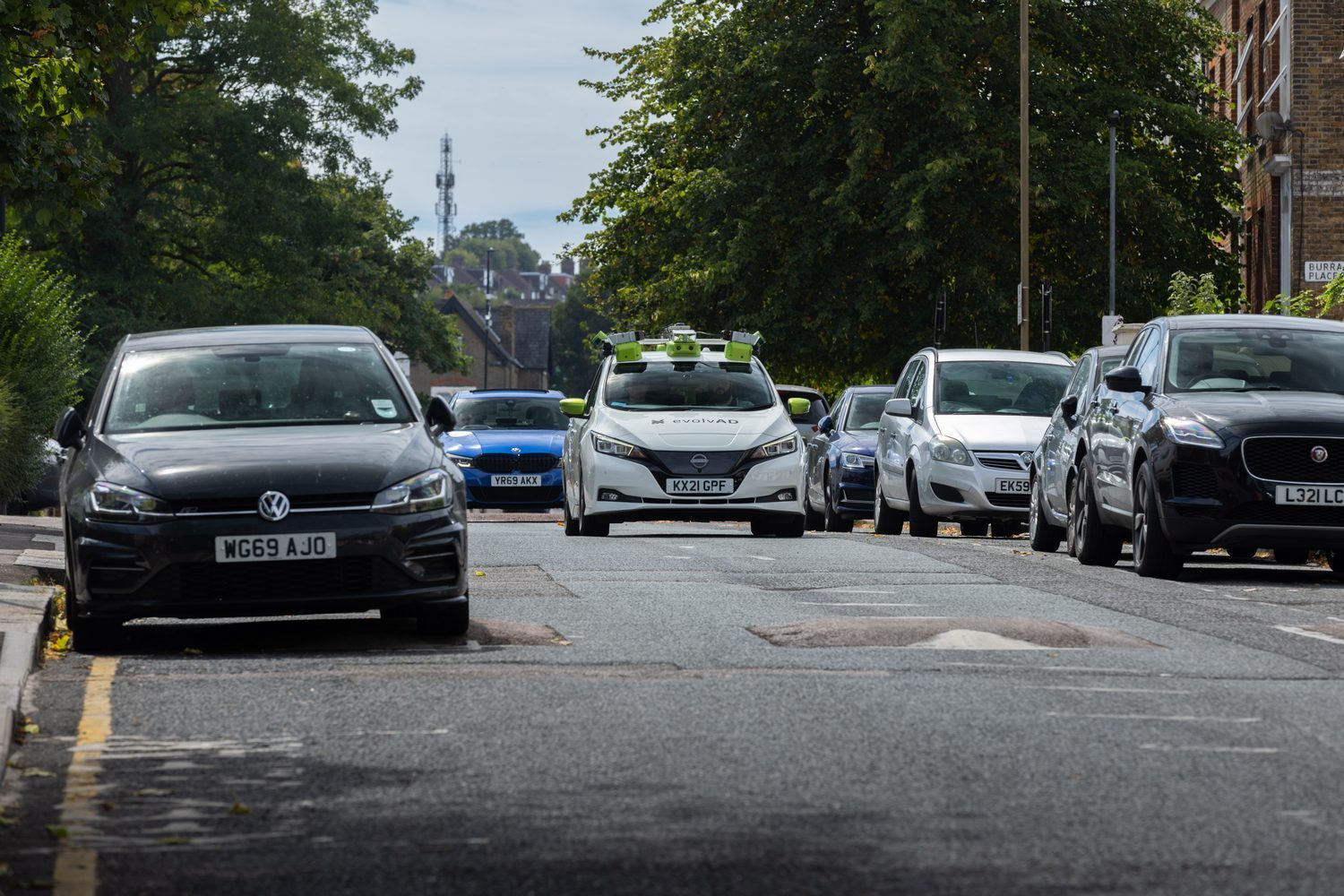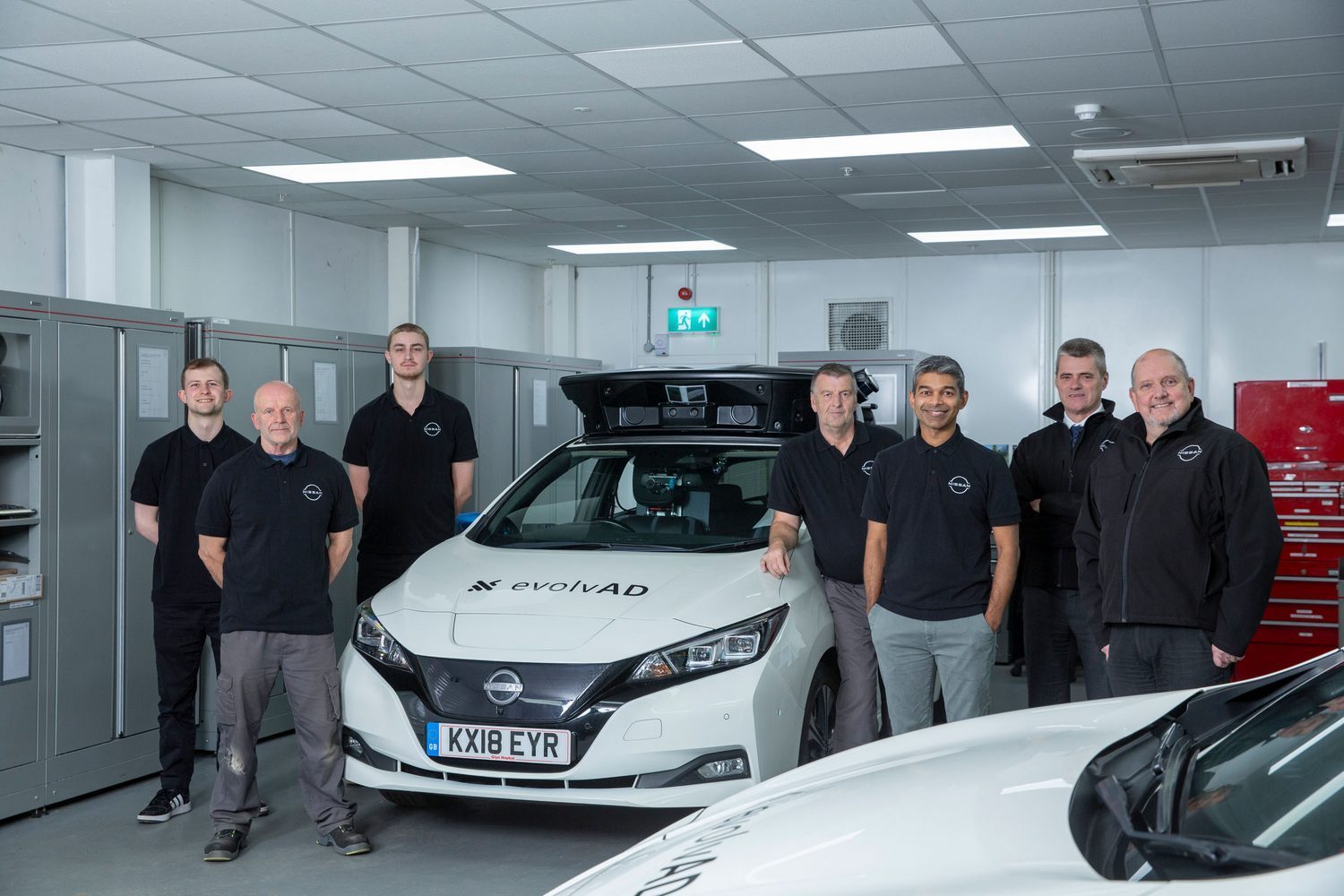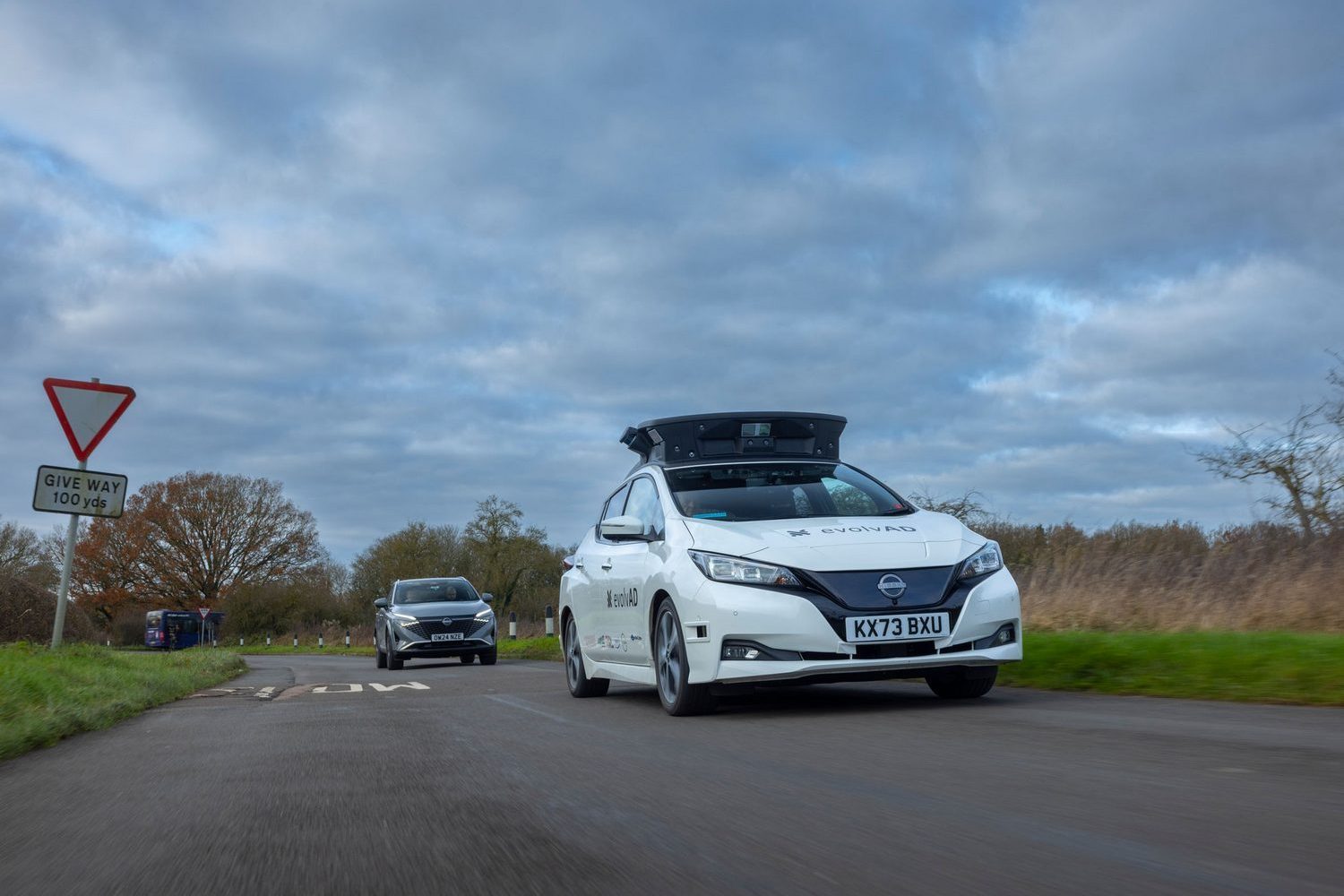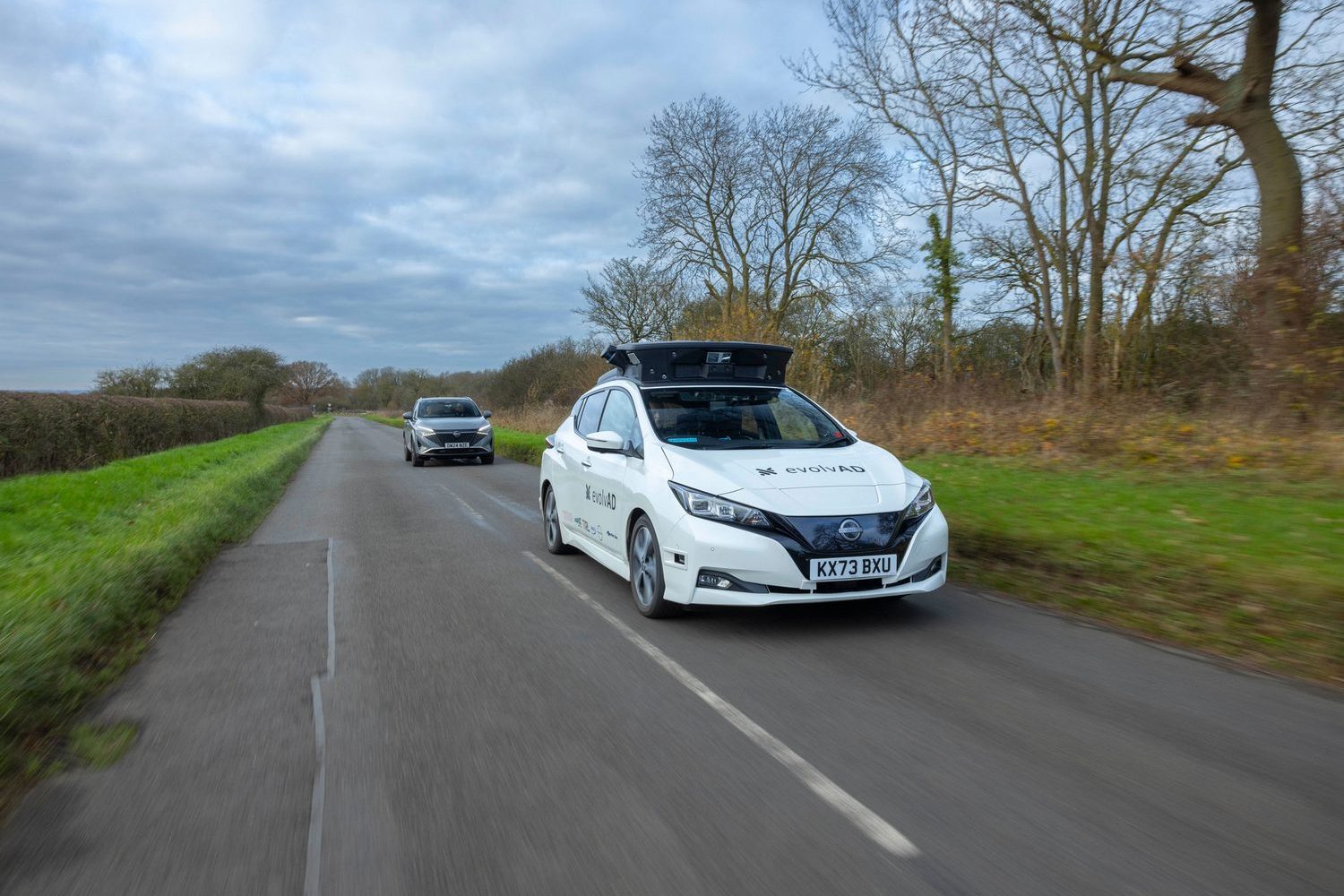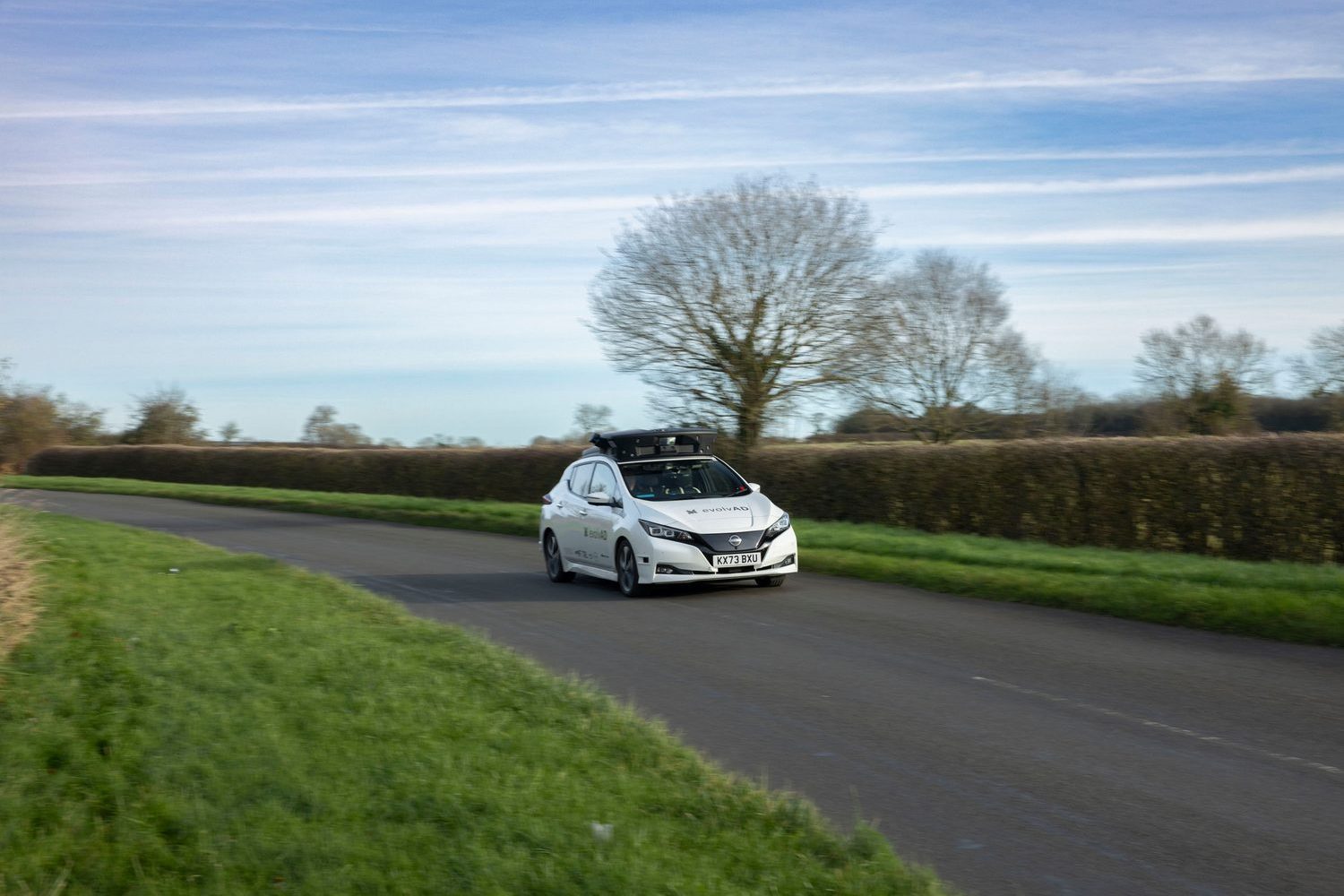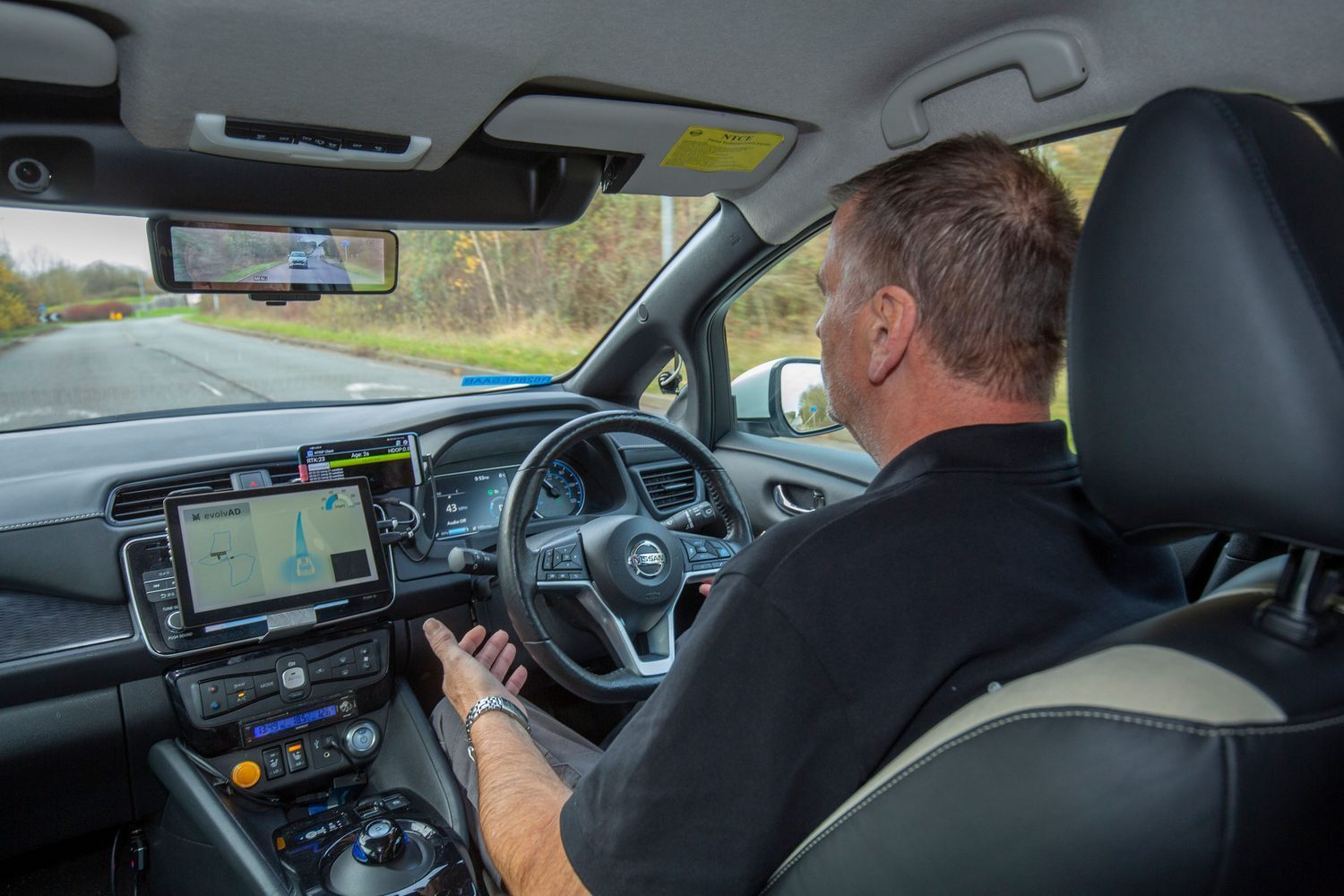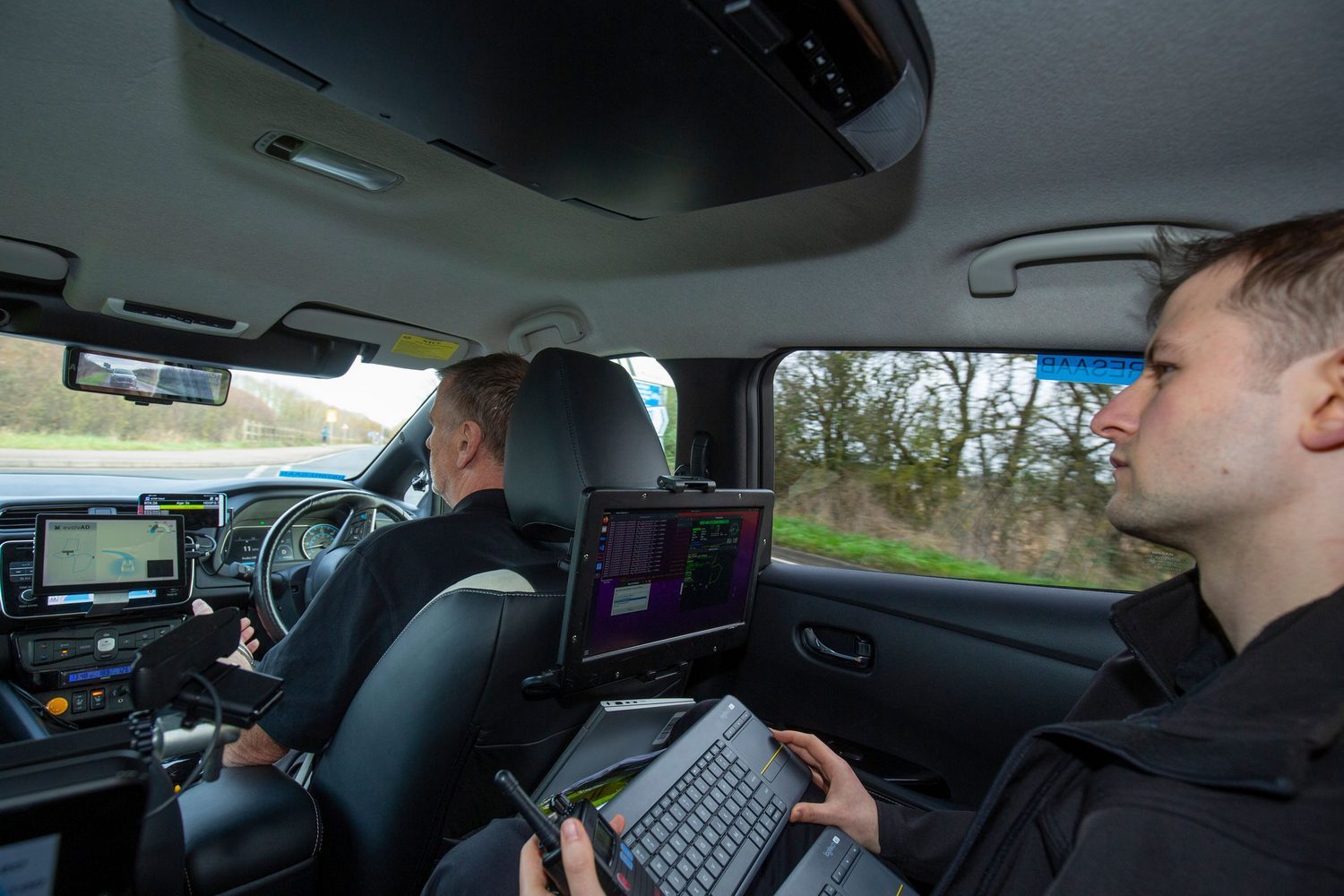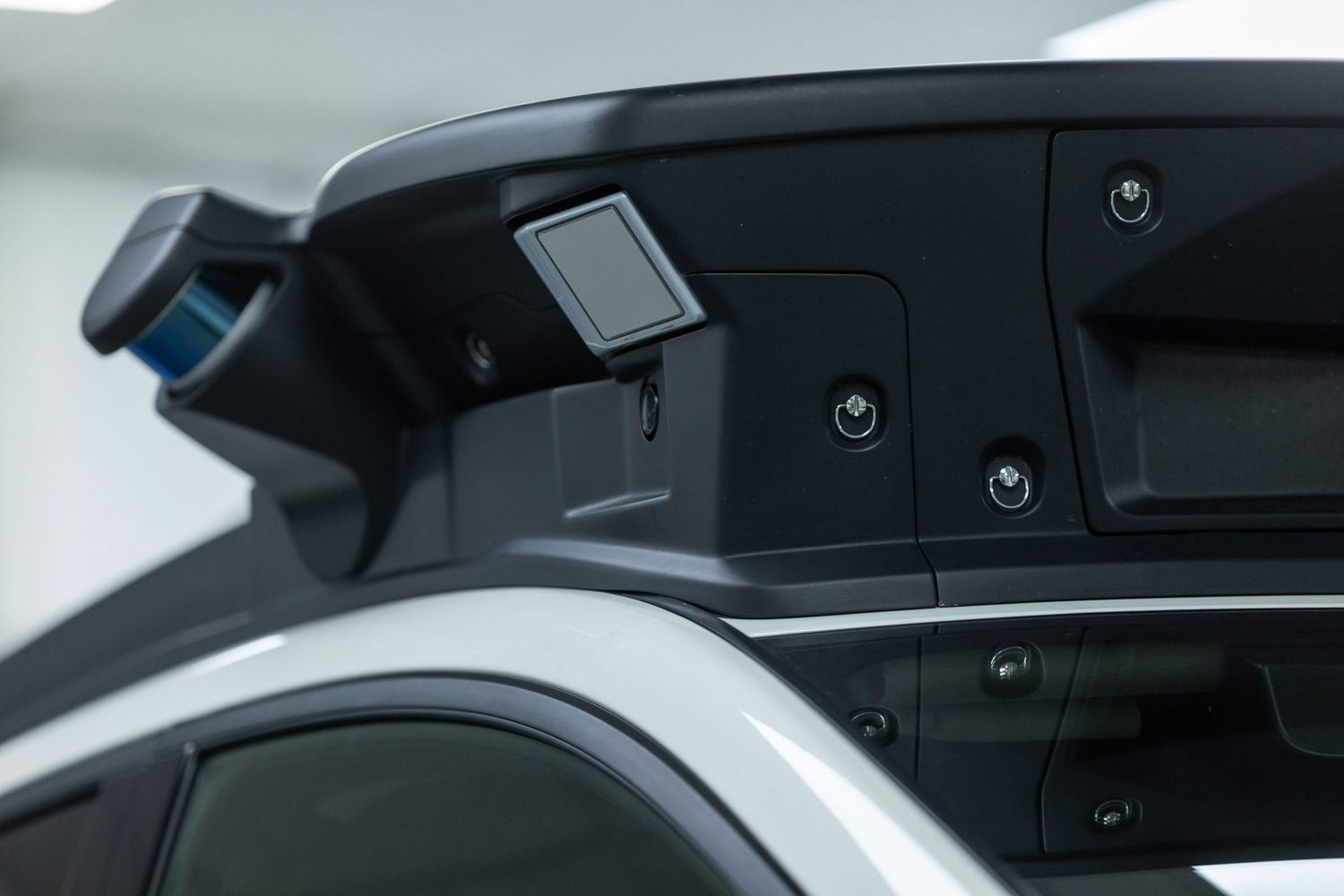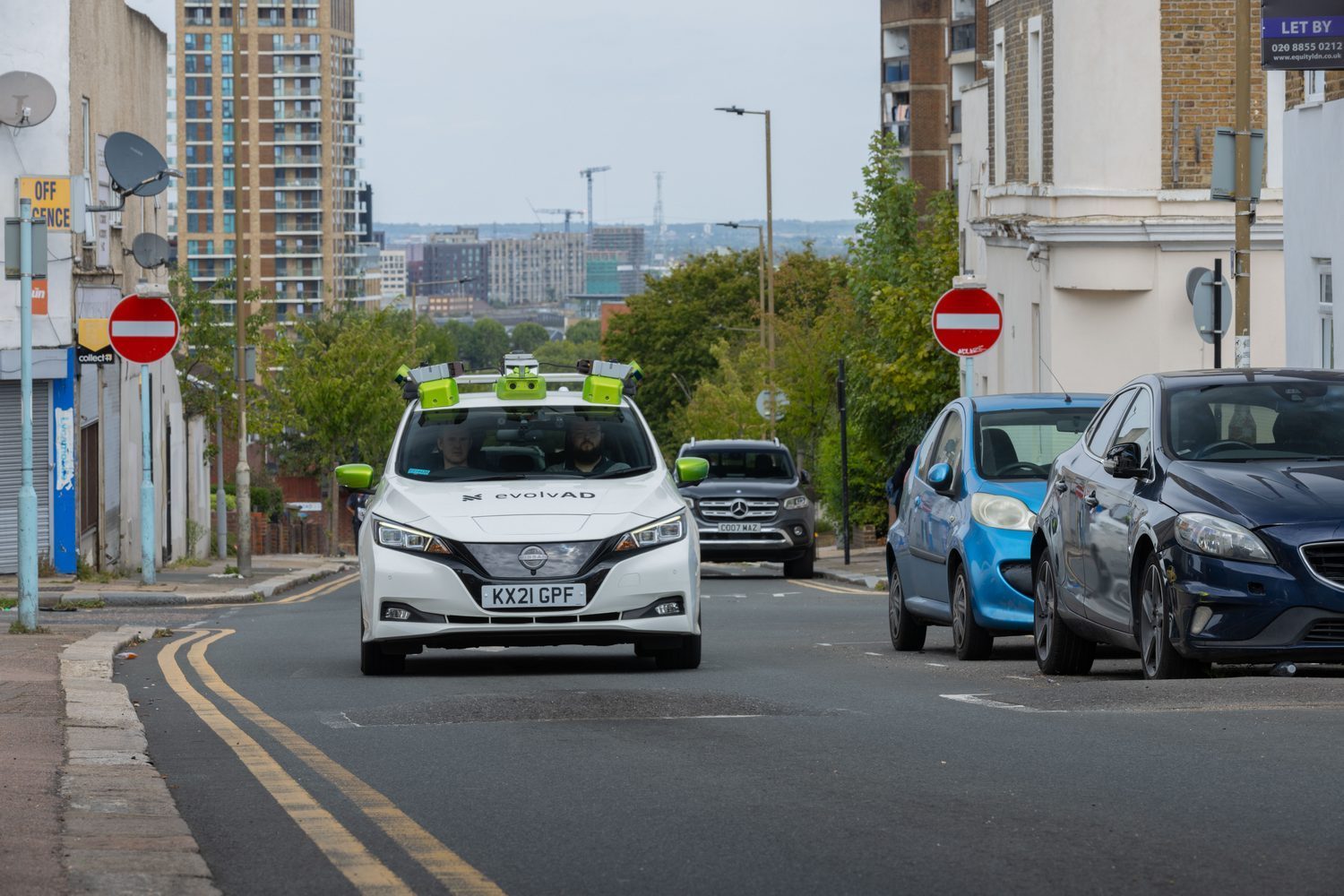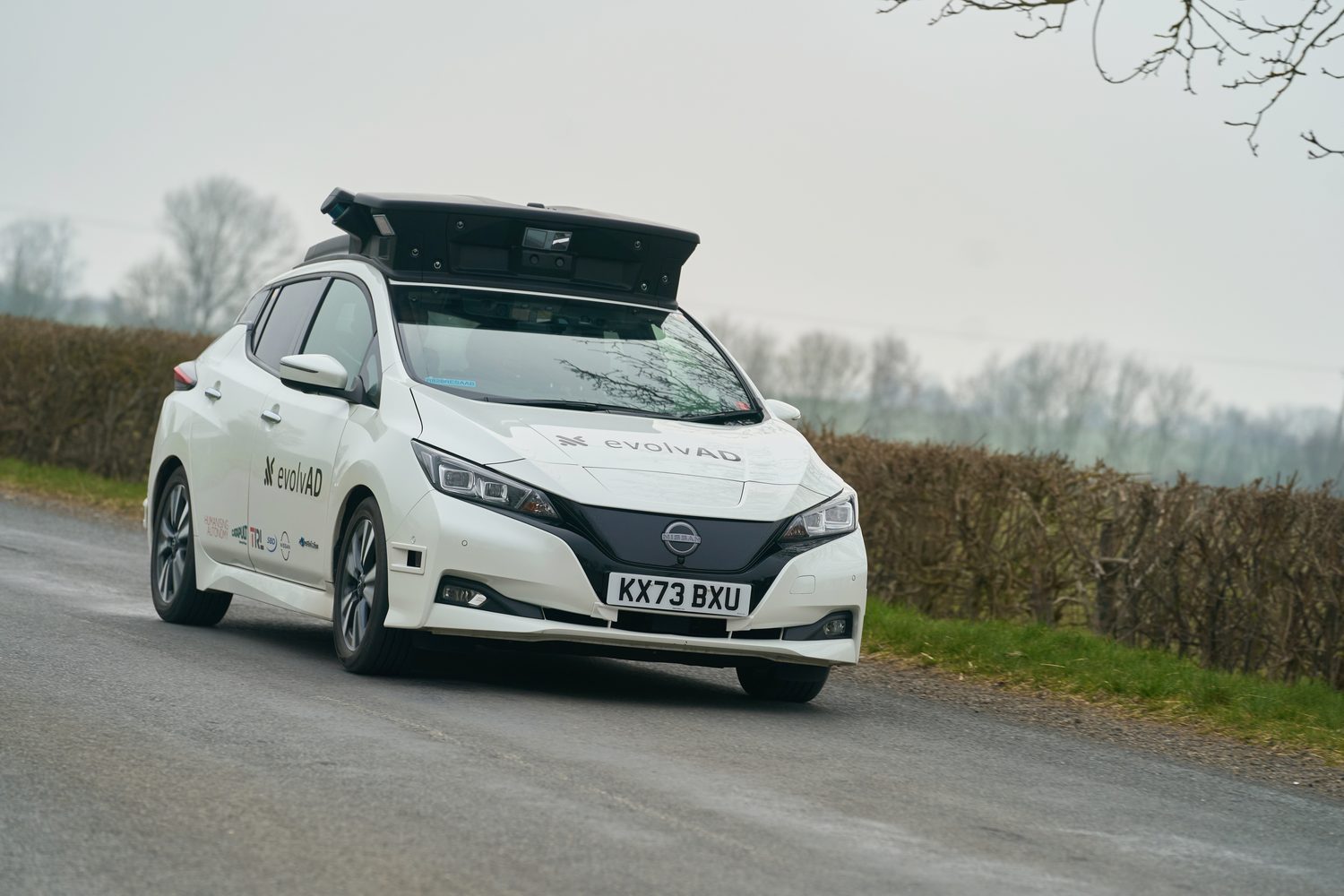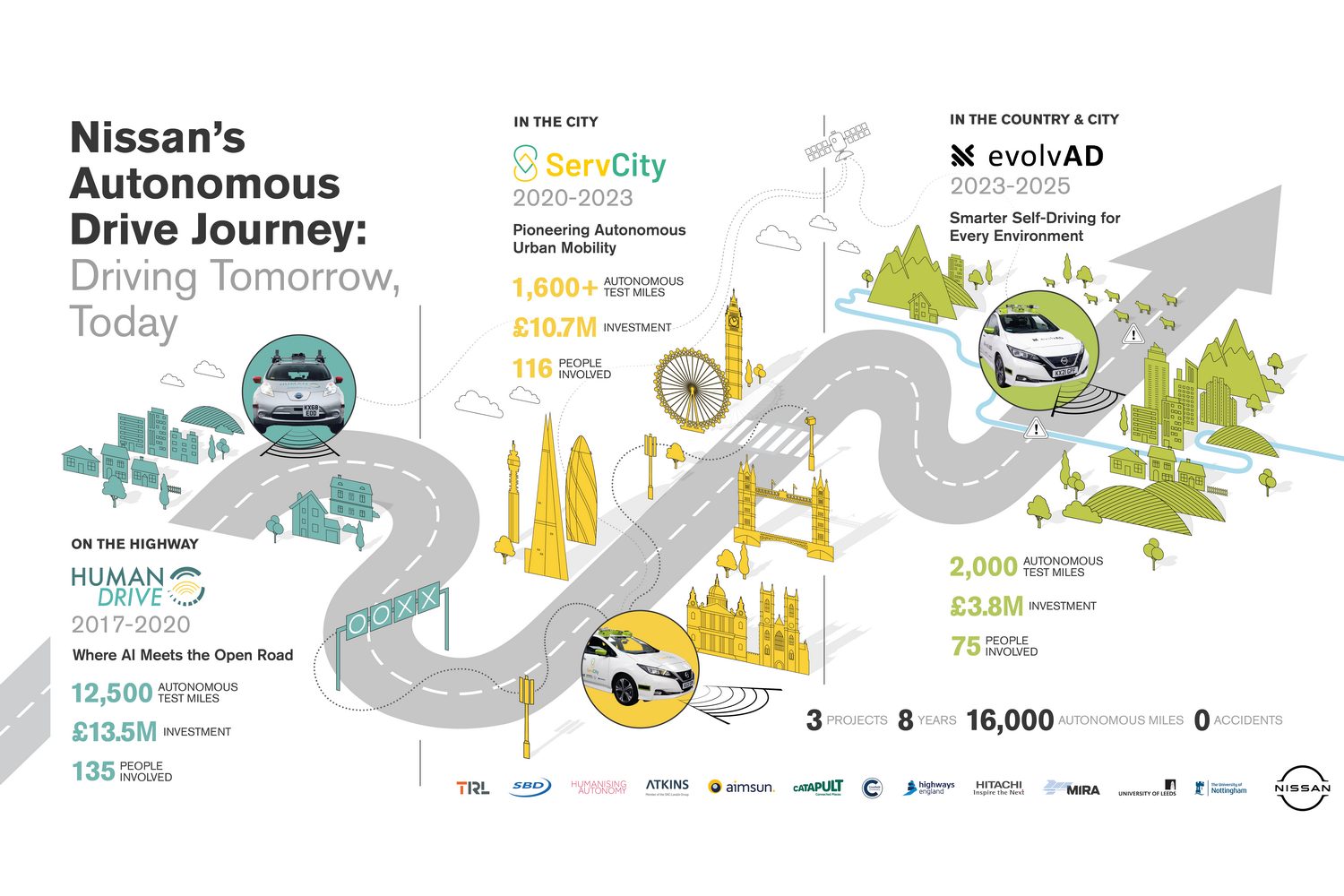Have you ever seen a Nissan Leaf with a roof rack? You have? Ah. Well in that case, this particular Leaf isn't likely to impress you much. At least not until you get moving.
You see, the roof rack in question does not exist for lifestyle reasons. It's not there to carry jerry cans (what's the point in an electric car?) and nor is it there for your skis, a roof tent or your pushbike. Instead, it hosts a vast array of sensors and cameras that feed back to a massive computer that fills the boot. It's a practicality nightmare - one that immediately negates one of a conventional Leaf's selling points - but while this particular Leaf may need more luggage-carrying capacity, the one thing it doesn't really need is a driver.
Yes, this Leaf is the latest stage in Nissan's autonomous driving programme, which started almost a decade ago. By 2020, the company had successfully used a driverless Leaf on a British motorway, taking it from Nissan's technical centre in Cranfield, just north of London, to the Qashqai factory in Sunderland, in the far north-east of the country.
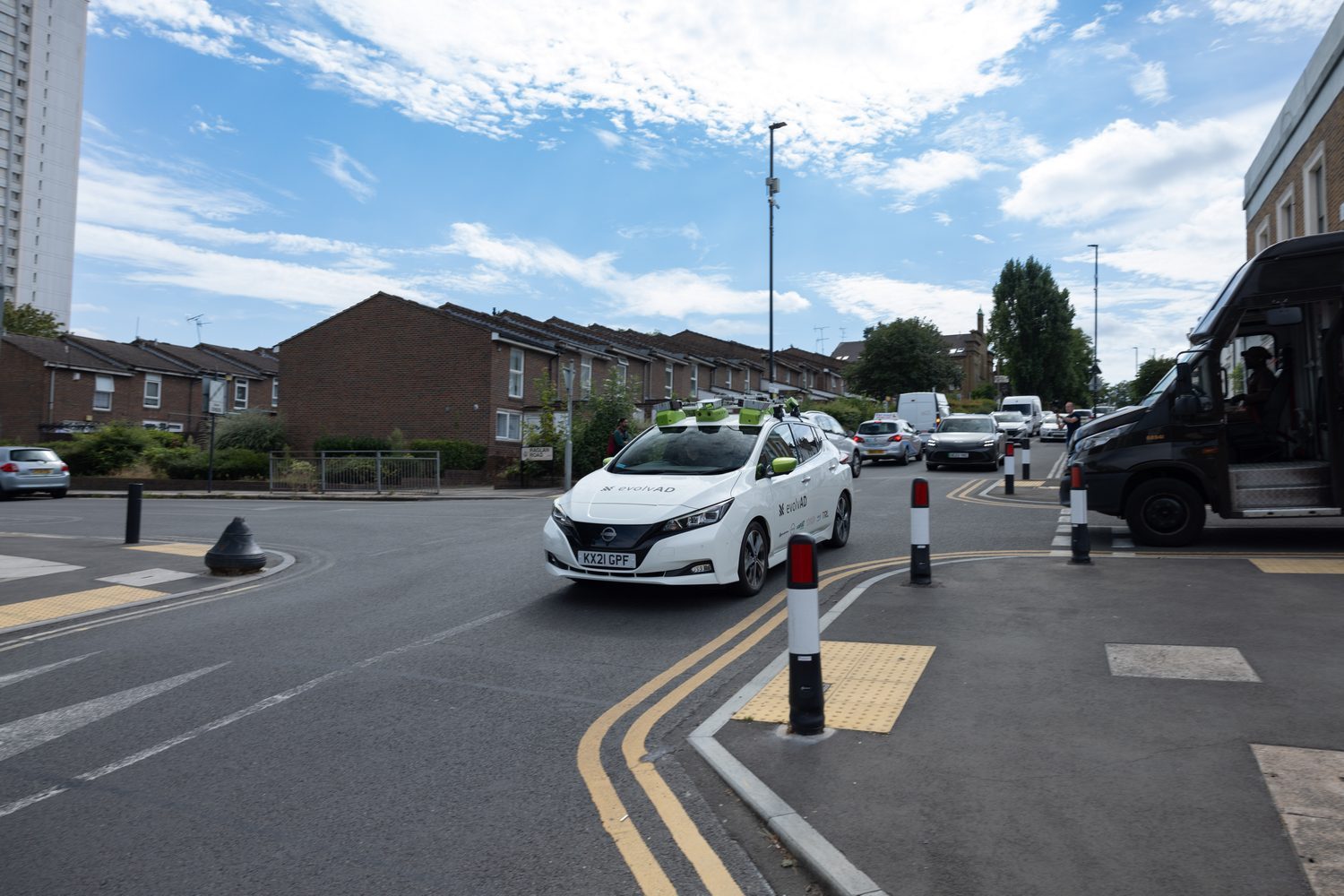
A few years later, autonomous Leafs were on UK roads again, driving around central London to test how they coped with urban environments. And now, Nissan is taking on arguably the most challenging environment yet: a high-speed rural road.
Not only do drivers - be they humans or computers - have to contend with speeds of up to 100km/h, but they also have to deal with poor or contaminated road surfaces, horse riders, cyclists and tractors. Road markings are often less well defined, or even non-existent, and there are the problems of blind bends, soft verges and signposts hidden by overgrown vegetation.
Even Nissan admits this isn't quite the finished article - there are still instances when the human in the driving seat needs to take over - but the Japanese company clearly thinks it's close. In 2028, Nissan plans to offer some kind of autonomous mobility services in Europe, while a similar service is launching in Japan even sooner than that.
But what's it really like to be driven at 100km/h by a car that effectively doesn't need a driver? With some trepidation, we strapped ourselves into the 'EvolvAD' Leaf to find out.
Not standard, but similar
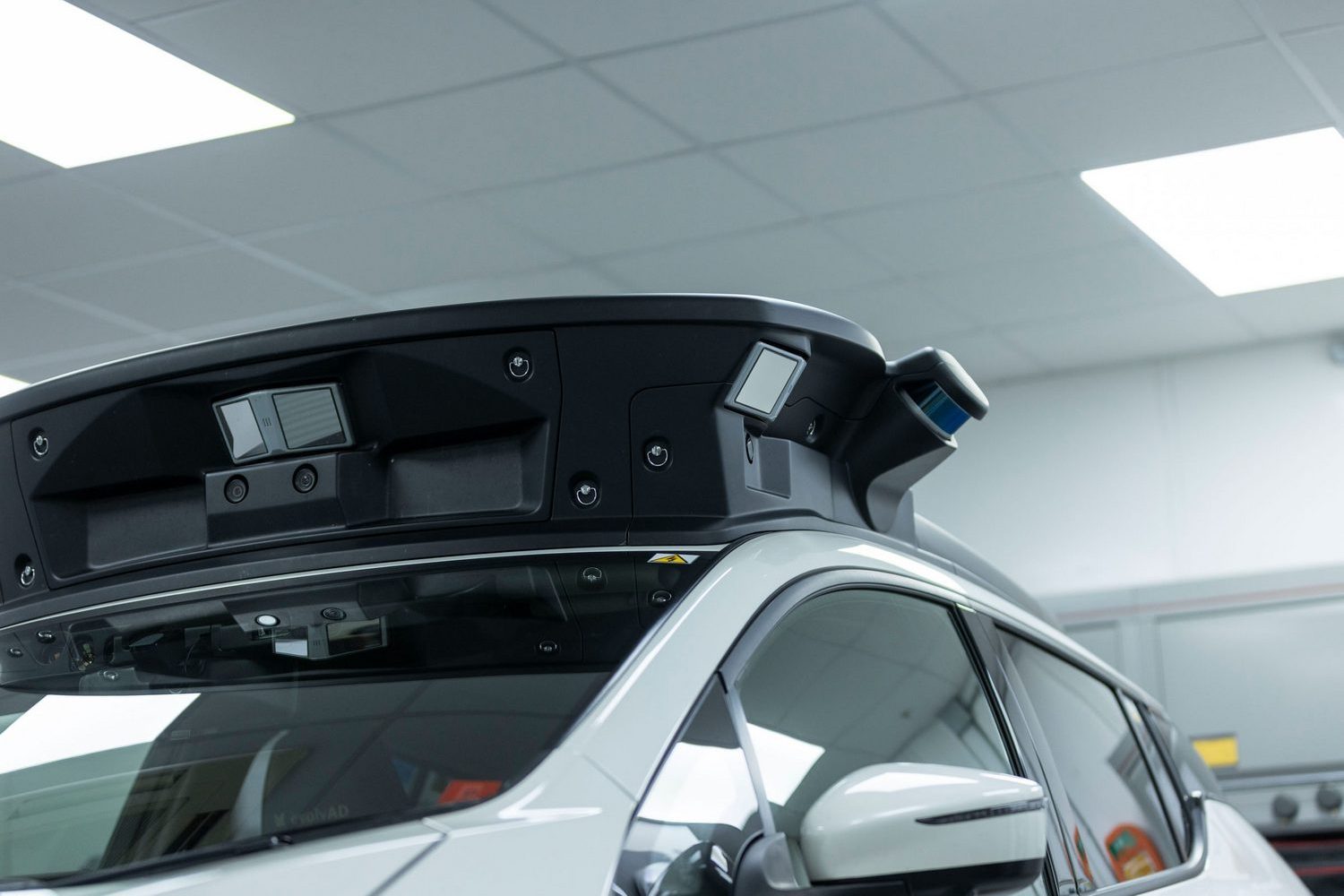
From the outside, the Leaf looks conventional, save for the big roof box on top. But that's just a plastic shell that makes the sensors look a bit cleaner - both aesthetically and aerodynamically. In reality, it's a conventional roof rack laden with cameras and lidar systems to give the car a permanent, 360-degree view of the world around it.
And the interior looks fairly normal, too, even if it isn't entirely standard. The boot, for example, is completely full of computer equipment that essentially makes up the autonomous 'brain' of the car, and there are some screens in there to tell the driver and passengers exactly what that autonomous brain is thinking. But those minor tweaks aside, it's pretty much the same as any Leaf you could go out and buy tomorrow.
Yet the car is quite different under the skin, even if you discount its newfound roof rack and the boot full of electronics. Instead of a conventional steering system, with mechanical linkages and power assistance, the EvolvAD car has a steer-by-wire system, which means there's no mechanical link between the steering wheel and the front wheels. Instead, it's all controlled by electrical signals, and the same goes for the brakes.
To a luddite, that might sound a bit worrying. After all, nobody wants an electrical failure to leave them completely devoid of steering or braking, but apparently the system is easier to integrate with the autonomous technology than a conventional mechanical set-up. And you quite happily go on holiday in a plane that uses much the same technology to move its control surfaces.
For those who like their engineering to comprise bits of metal and rubber, Nissan has also tweaked the car's suspension to suit the slightly different driving style of the autonomous vehicle and deal with the weight of the equipment.
Advanced driver, without the driver
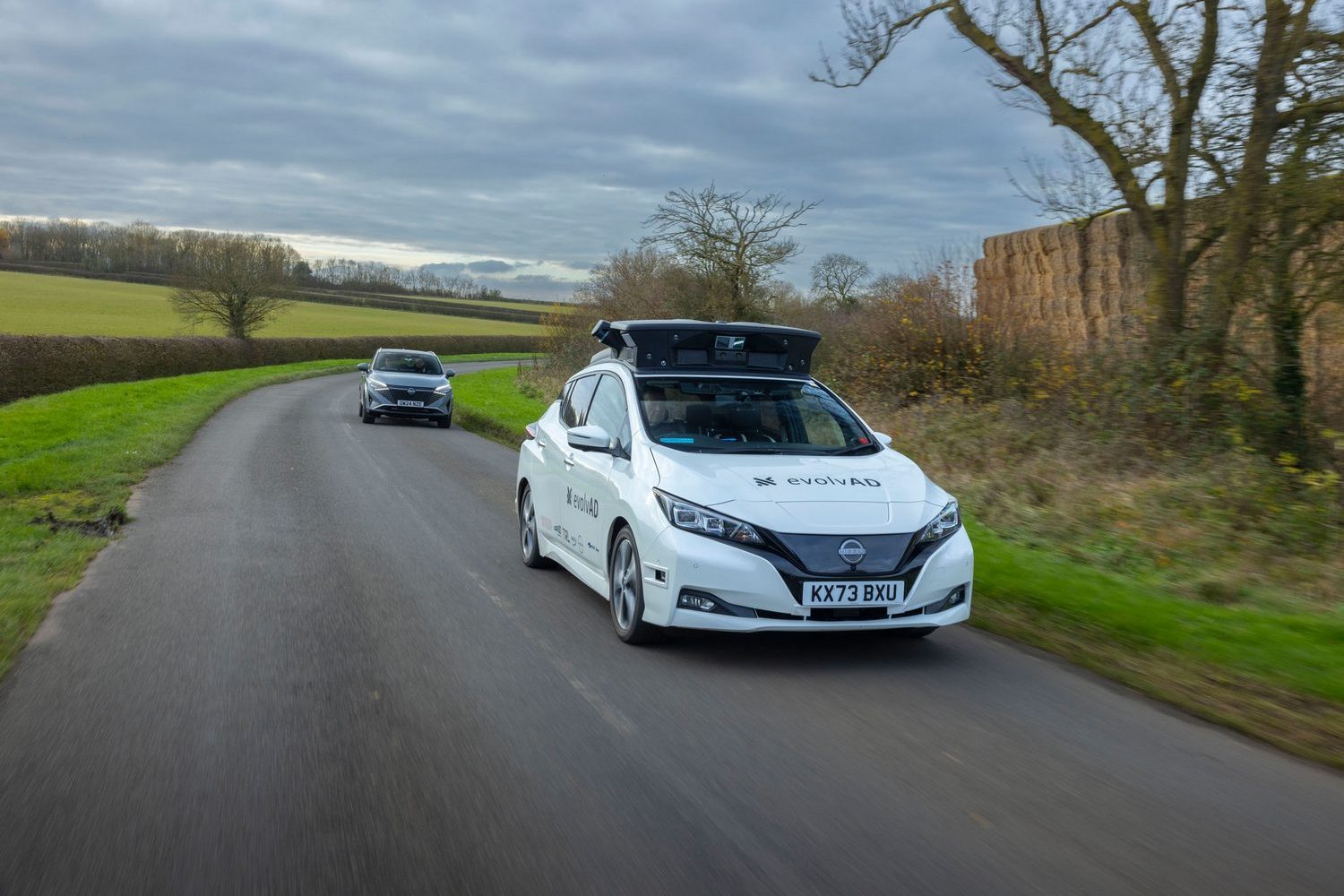
Not that Nissan wants the EvolvAD Leaf to drive all that differently to a human driver. The engineers make a lot of noise about traffic flow and “assertiveness,” suggesting there's a desire to make sure the Leaf behaves safely but doesn't get too over-cautious. In short, the car is supposed to behave like a driver who has done an advanced driver qualification but can look in 360 directions at once and can absorb data even more quickly. And the results are, at least initially, quite impressive.
The EvolvAD Leaf successfully navigated a car park, sticking religiously to the 10mph limit, and all felt surprisingly normal. It was a little strange to see the driver in some kind of meditation pose, with his hands on his knees and palms upturned, ready to grab the wheel at any moment, but otherwise it was all very unremarkable.
Even pedestrians crossing zebra crossings were left to do so courteously without the supervisor (I hesitate to call him the driver, even though he technically was) having to intervene. And when a Mini came barrelling through the car park in a slightly more rambunctious way than the rules of the road might deem suitable, the Leaf just stopped and let it go.
But as soon as we left the confines of the business park, things started to go slightly awry. One of the car's first tasks was to navigate a roundabout, so it slowed for the junction, but as the road was clear, it didn't stop. Then it drove around the island at a speed best described as cautious, but not exactly sluggish. So far, so acceptable, but as the car indicated to leave the roundabout, it slowed a little too much for our liking, and it didn't accelerate away until it was established on the straight road ahead.
As driving misdemeanours go, it's a very minor one, but it planted a seed of doubt that the Leaf may not be quite as assertive as Nissan might have hoped. Still, it behaved safely, and that's the most important thing.
Getting up to speed
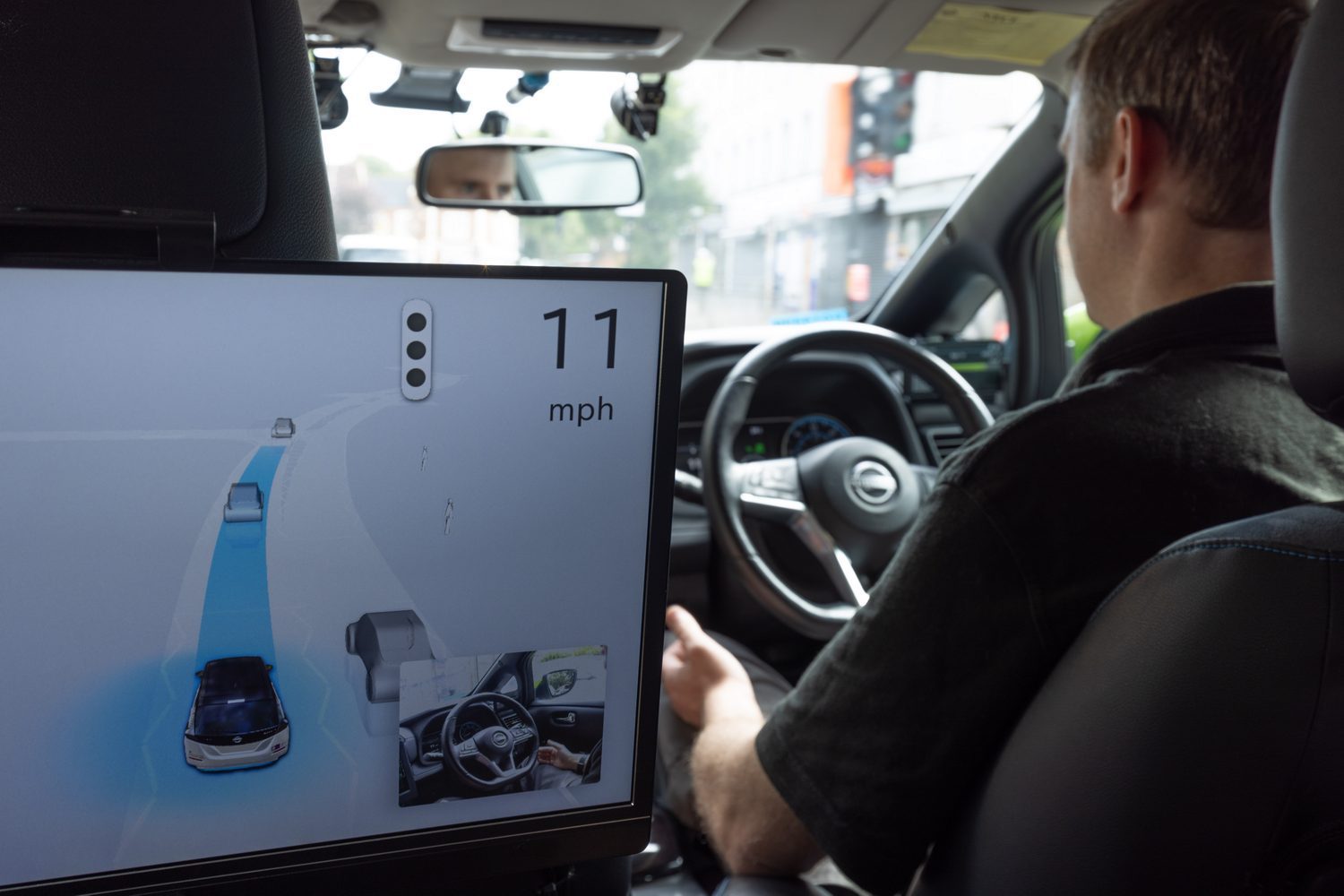
There's no doubt that rural roads are some of the most challenging, what with their high speeds and unpredictable nature, as well as their often-imperfect surfaces and infrastructure, but although a roundabout may have made the Leaf feel hesitant, it seemed keen to take on more open roads, driving accurately in a suitable position in its lane, despite the speed touching 100km/h. Admittedly, some of the steering inputs felt less smooth than they might have been with a capable driver at the wheel, but the road positioning was faultless, even when faced with oncoming traffic about which the same could not be said.
Unfortunately, Nissan hasn't quite worked out how the car should overtake cyclists just yet, so it just slowed and followed them. There's nothing wrong with that per se - sometimes it's the right thing to do - but it can't pull out and overtake by itself.
That small weakness aside, though, it generally behaved conventionally, slowing for corners, and even lifting off the accelerator when the suspension detected an uneven surface that might impact the grip available. Strangely, it all felt very familiar very quickly, and there was no great sense that it wasn't a human driver behind the wheel.
The moment the speed limit increased, the car would accelerate quite vigorously to the prescribed limit, and it would stay there unless conditions dictated otherwise. It followed other cars at a safe distance, it could deal with wide loads and parked cars, and it didn't even mind when the road markings vanished.
And when we made it to the next village, the Leaf could drive considerately and courteously without causing too many hold-ups. Yes, there were times when it pulled in behind a parked car it could probably have ventured around in time, but such decisions are judgement calls, and no driver will get them right all the time. And we'd rather it erred on the side of caution than start taking small risks.
We should also point out that in towns and villages, the Leaf was getting less data than it would expect to receive in the city centre. During tests in London, the Nissan could tap into data from CCTV cameras to work out where buses were stopped and where hazards were located, allowing it to move into a suitable position before the on-board sensors - or the human supervisor - could 'see' the problem. While Nissan describes this data as “nice to have, rather than essential,” the company admits that it “goes from being nice to have on the motorway to very nice to have in town.” In short, it isn't a necessity in urban areas, but it's more than a luxury.
All that being so, the Leaf acquitted itself very well. If we were being picky, we'd criticise the fact the car can only respond to what it's experiencing, rather than predicting what will happen and acting accordingly. Where a competent, capable driver would slow for a corner and then accelerate out, the EvolvAD car waits a moment longer to slow and takes a few beats longer to get back on the power as well. And though it may slow for bumps in the road, it doesn't spot them ahead of time and slow itself down in anticipation.
We'd also point out that Nissan doesn't yet know how all this technology will deal with wet weather and darkness (it hasn't tested the car at night yet) but computers are only as good as their inputs, and without the sensors to spot all those things, it can't be expected to deal with them.
So yes, it made some funny decisions and it was occasionally over-cautious - mainly because it can't perceive or predict the future in the way a human can - but it was very safe and stable, and it drove around the country lanes of the British midlands far more confidently than some drivers tend to. In fact, we doubt many of the locals really noticed the car wasn't being driven by a human, and we would be quite happy to share the road with it.
Coming soon to a road near you?
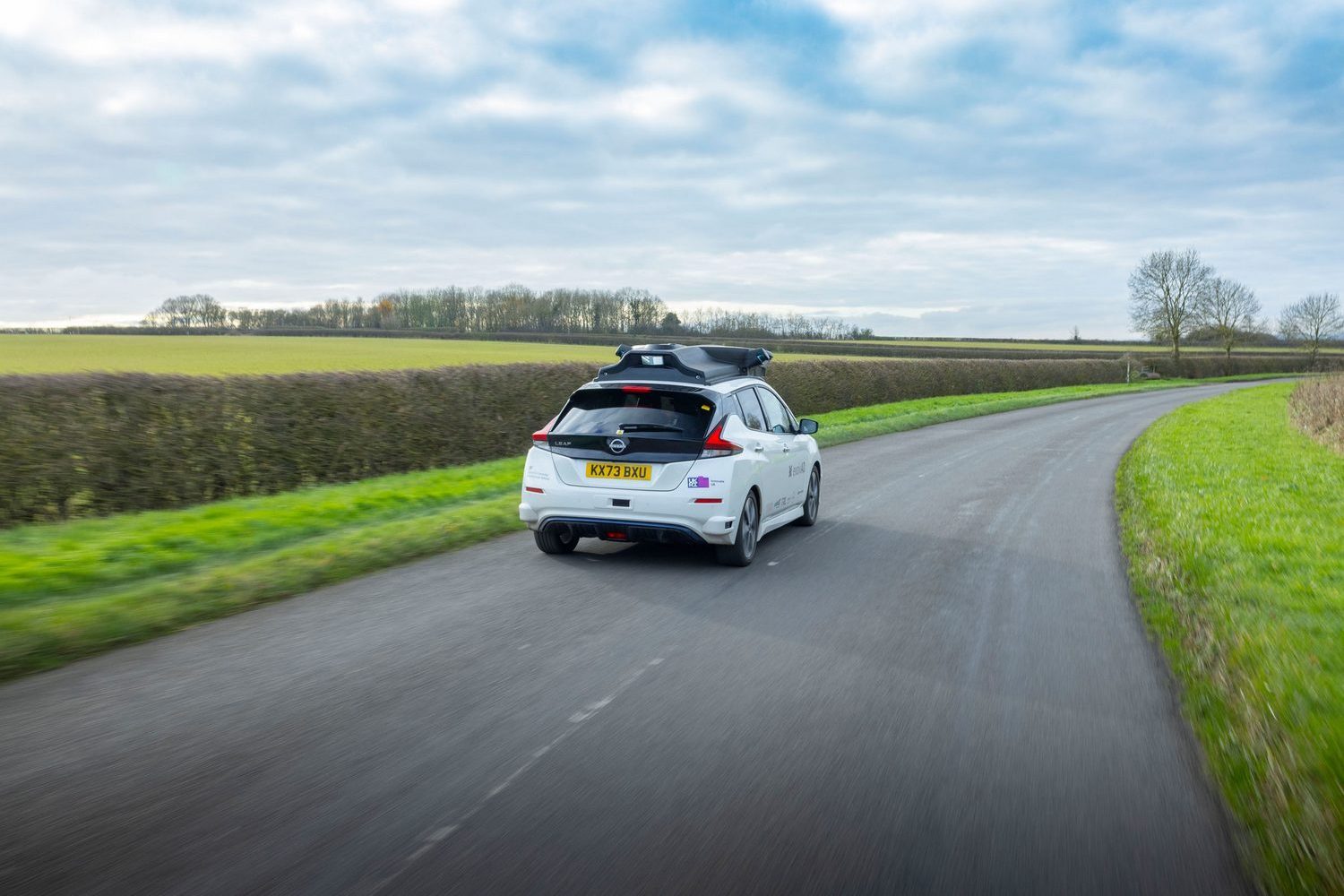
That's probably a good thing, because Nissan says European drivers will soon have to share the roads with cars that have this technology on board. The company wants to introduce a kind of ride-hailing-style smartphone application that allows people to book an autonomous car to take them from one place to another. The system won't quite work like Uber, because the cars will have to use dedicated stopping places for pick-up and drop-off, but those locations will be more of a smaller, on-demand bus stop.
And if you think this is science fiction, you've got another thing coming. The system is being rolled out next year in Japan, and we're expecting it to arrive in Europe around 2028, assuming legislation and the technology can develop swiftly enough to allow it. And those cars won't have a human driver to monitor them.
Frankly, having ridden in the EvolvAD Leaf, we have our misgivings about all that. While the car did behave safely, it wasn't as smooth or as proactive as the advanced driver Nissan is trying to emulate, and we might not have been so comfortable without someone there to grab the wheel at any time.
All that said, though, the technology is already mighty impressive, and we saw it quite happily tackle some of the most demanding driving many motorists will ever do. And while it might not be a substitute for an advanced driver who's teetotal and on good form, it's a surefire improvement on someone who's on their phone, not wearing their glasses or spent a little too long propping up the bar last night.
For those people, the prospect of a Nissan taxi rank may not be a bad one. At the end of a boozy evening, you can meander the 100 metres from the pub to the pick-up location, and the car can just scoot you to the one 200 metres from your front door.
Okay, we have taxis for that already, and we aren't quite sure we buy Nissan's assertion that the autonomous Leaf improves traffic flow and makes drivers' lives easier, but we've seen some taxi drivers racing through Dublin in the early hours. And we'd rather be in the back of a driverless Leaf...
In the longer term, Nissan wants to find out whether it can make this technology affordable enough to fit into customer cars and possibly give them the chance to let the car take the strain on the commute, while still offering drivers the opportunity to take control when they want to. It admits there are miniaturisation, packaging and performance obstacles to overcome, but it's bullish about the potential.
And no wonder. For now, the technology is not quite there, and maybe it won't be commercially viable for many years to come, but Nissan's engineers are closer to achieving it than you might expect. The technology on show right now clearly is imperfect, and the small problems will undoubtedly be the hardest to iron out, but whether you're excited or scared by driverless technology, Nissan's EvolvAD system is certainly intriguing.


